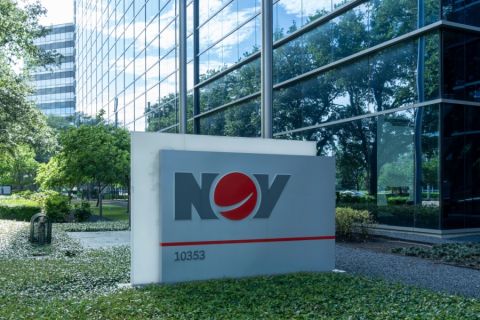Jordan Blum, editorial director, Hart Energy: How does the energy sector solve its workforce challenges? We're here at the Kay Bailey Hutchinson Annual Energy Symposium in Austin to find out, and I'm joined by Gene Shepherd, the founder and CEO of VTX Energy Partners for this Hart Energy LIVE Exclusive interview. Thank you so much for joining us. Absolutely.
Gene Shepherd, founder and CEO, VTX Energy Partners: Thanks, Jordan.
JB: To get started, just why is it so important for you to be here involved with the Energy Center and participating in the symposium?
GS: Well, I've been involved with the KBH Center for four years, and it's been a great experience. It's really principally my interest and it's to some degree selfish. I think our industry will have some issues in the coming years given the environment, a lot of divergent opinions on the outlook for energy. And so I think it's critical to be in front of students, sharing with them what our collective views are as far as the outlook for the next decade principally. That gives us the opportunity to get in front of them and talk about the opportunity in the industry. And I think people talk about energy transition and there's always a lot of consternation around that topic, but really whenever there's change, there's opportunity. And so it gives us the opportunity to connect with students and talking to them about the outlook for the industry and where there's opportunity.
And really the importance is, is that a lot of discussion in the industry about limited access to capital. But another big issue that I worry about is just our ability to sort of bring in the next generation of bright young professionals and leaders. Where are they going to come from? Back in 2014, the petroleum engineering department here in the Cockrell School, I think we had close to 2000 applicants for a hundred positions in this last year. Maybe it was a couple of hundred applicants. And so there's just, with all of a lot of disinformation, a lot of change that's coming with change comes opportunity. I think that creates a lot of anxiety on the part of students. So we're trying to connect with students. My interest in being involved, back to your question with the Kay Bailey Hutchinson Center, is to create a forum to get in front of students and talk to them about our industry in hopes that we can generate interest and lay out sort of a constructive framework for where there's opportunity. And the goal is to bring students into our industry, which people are the lifeblood of any industry.
JB: In the meantime though, I mean the industry is booming and the Permian Basin is booming where y'all have a lot of focus in West Texas and New Mexico. Obviously though the competition is tight for assets for acreage. VTX is currently growing, though. Can you talk about that effort and just kind of how you see things evolving out there?
GS: Yeah, the Permian is the premier basin in the U.S. Lower 48. It benefits from the standpoint that the resource potential is so enormous, and you've got a very supportive service industry, and there are just a lot of huge positives that make it sort of the low cost basin. So to some degree, it's somewhat insulated in volatility and commodity prices. Prices could go to 60 other basins could be shutting down, and the Permian will still be an active activity, will be, things will be busy in the Permian. So I think it's sort of interesting, you would think in an environment where you have $90 oil prices, that there would be a lot of capital formation taking place to go out into the permit or the Williston or the Eagle Ford, and it's really not happening. And we've talked about this before as it has when you've been in similar situations in the past.
And to some degree, the traditional funding sources have sort of moved away from traditional upstream and are targeting wind and solar. And my view is there's a huge need for all of those different energy sources, but we can't walk away from traditional energy. So the Permian's going to be at the top of anyone's list in terms of basins that they want to be active and acquire assets and grow a business. And so it's competitive because of the nature and the importance of the basin, but at the same time, the competition is not as great principally from the standpoint of just how challenged capital formation is. So we're trying, as you and I have discussed, trying to be a beneficiary, the Southern Delaware is not as consolidated as say, the Midland Basin. There was an announcement this week, Vital Energy is taking down three acreage positions in the southern Delaware.
So that consolidation, my sense is going to play out over the next 12 months. And frankly, if you think five years down the road, the consolidation is going to play out and you'll have only a handful of parties. It's just sort of the nature of the business and where we are today. There's not a lot of exploration capital that's being spent, and we're in sort of that manufacturing mentality. And so it's all about being the low cost producer and to be the low cost producer, you have to have scale, and so scale will drive consolidation in the business.
JB: It'll be really interesting to see how that plays out now. Thank you so much for joining us here at the KBH Energy Center for this Hart Energy LIVE Exclusive interview. To read and watch more, please visit online at hartenergy.com.
Recommended Reading
NOV Announces $1B Repurchase Program, Ups Dividend
2024-04-26 - NOV expects to increase its quarterly cash dividend on its common stock by 50% to $0.075 per share from $0.05 per share.
Repsol to Drop Marcellus Rig in June
2024-04-26 - Spain’s Repsol plans to drop its Marcellus Shale rig in June and reduce capex in the play due to the current U.S. gas price environment, CEO Josu Jon Imaz told analysts during a quarterly webcast.
US Drillers Cut Most Oil Rigs in a Week Since November
2024-04-26 - The number of oil rigs fell by five to 506 this week, while gas rigs fell by one to 105, their lowest since December 2021.
CNX, Appalachia Peers Defer Completions as NatGas Prices Languish
2024-04-25 - Henry Hub blues: CNX Resources and other Appalachia producers are slashing production and deferring well completions as natural gas spot prices hover near record lows.
Chevron’s Tengiz Oil Field Operations Start Up in Kazakhstan
2024-04-25 - The final phase of Chevron’s project will produce about 260,000 bbl/d.




